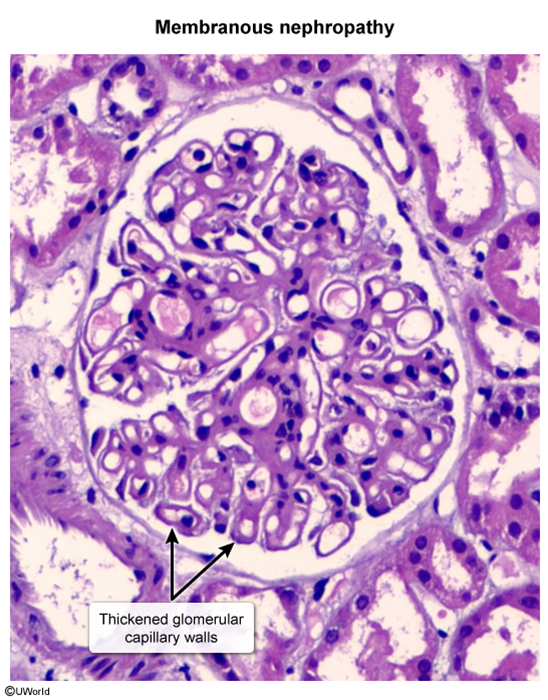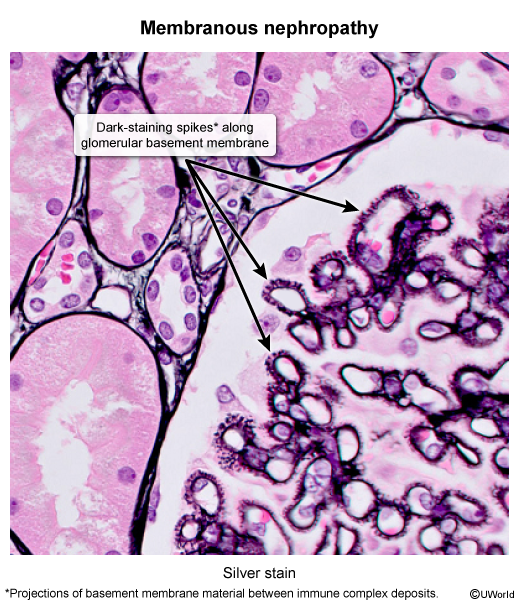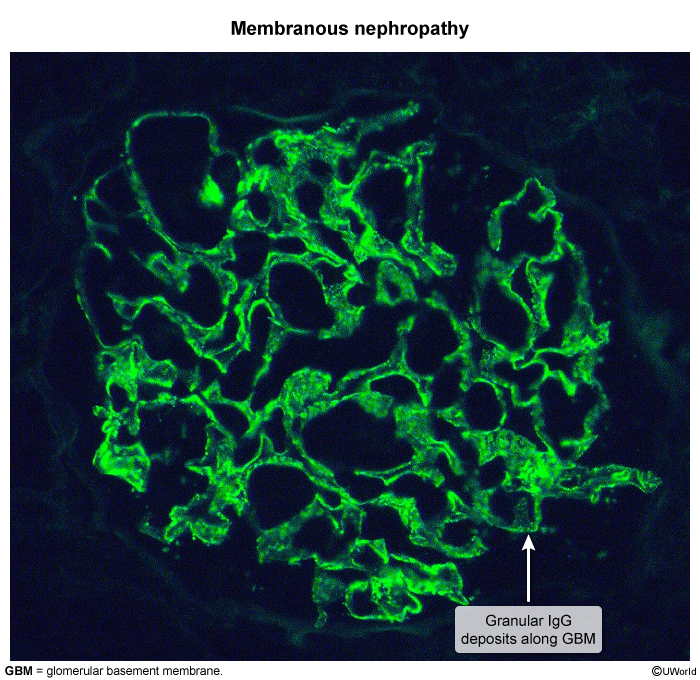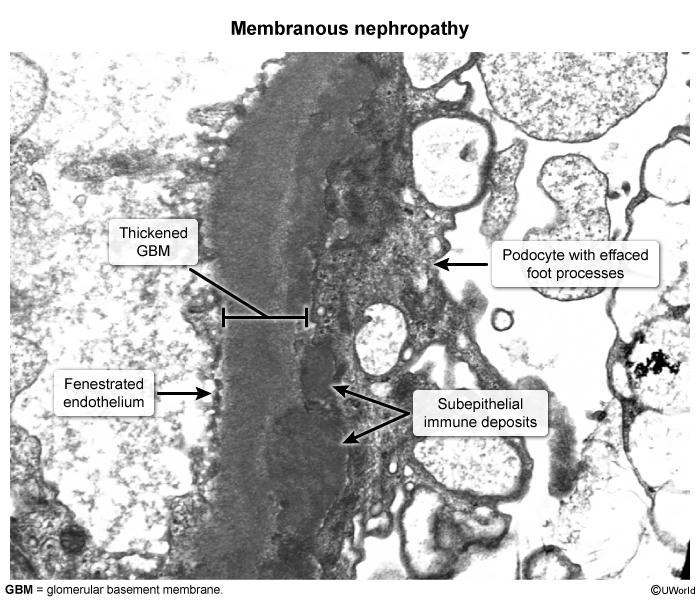Membranous Nephropathy
Article Sections
Introduction
Membranous nephropathy (MN) is a glomerular disease characterized by the deposition of immune complexes (ICs) in the subepithelial space of the glomerular basement membrane (GBM), leading to its thickening. It is one of the most common causes of nephrotic syndrome in adults and can progress to end-stage renal disease (ESRD) if left untreated. MN can be classified into primary and secondary forms, with distinct pathophysiologic mechanisms driving each subtype.
Epidemiology
MN accounts for approximately 20%-30% of nephrotic syndrome cases in adults, with a peak incidence between age 40 and 60.
- Primary (idiopathic) MN (70%-80% of cases) is due to autoantibodies capable of forming ICs with the phospholipase A2 receptor (PLA2R) or podocytes. It shows a slight male predominance (2:1 ratio) and varies in prevalence geographically and racially, with higher rates in Western countries and in White individuals, respectively.
Continue Learning with UWorld
Get the full Membranous Nephropathy article plus rich visuals, real-world cases, and in-depth insights from medical experts, all available through the UWorld Medical Library.
Figures
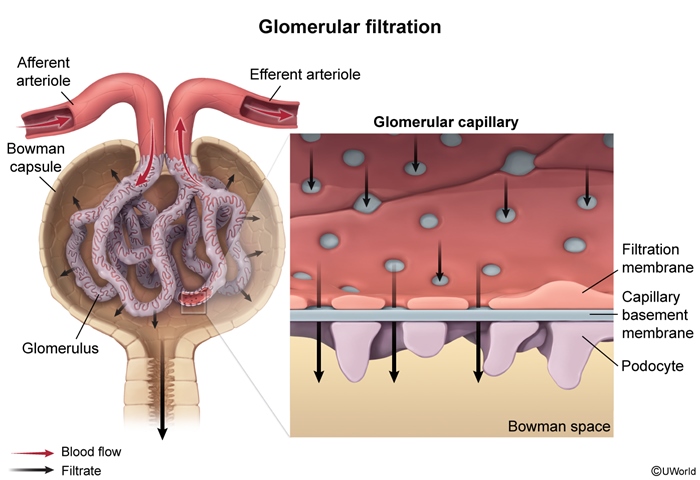
Images
